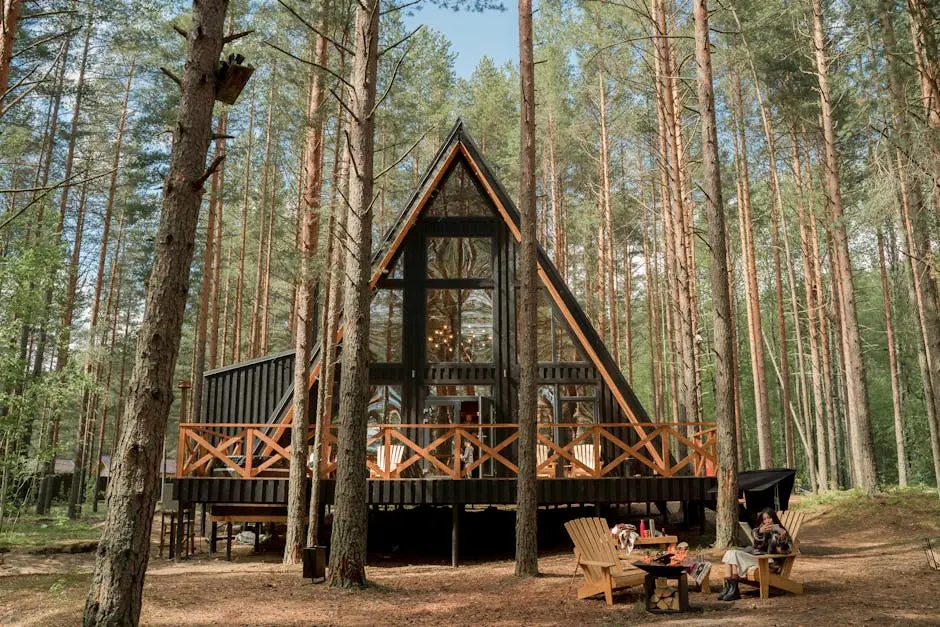Top Cabin Staining Tips for Lasting Beauty
Staining your cabin not only protects the wood but also enhances its natural beauty. Whether you’re a seasoned DIYer or a first-time stainer, this guide offers essential tips to help you achieve stunning and lasting results. Let’s dive into the best practices for cabin staining that will keep your outdoor retreat looking gorgeous for years to come.

Understanding the Importance of Cabin Staining
Cabin staining is not just a cosmetic choice; it’s an essential part of maintaining your wooden structure. A well-stained cabin can withstand various weather conditions, resisting fading and structural damage. Moreover, the process of staining enhances the natural grain of the wood, bringing out its unique character. Without proper staining, your cabin will succumb to the harshness of the elements over time.
Over time, ultraviolet (UV) rays can cause wood to warp and discolor, stripping it of its natural beauty. Staining adds a layer of protection that can significantly prolong the life of your cabin. Understanding this protective aspect is crucial for any cabin owner. Not only does a stain enhance aesthetics, but it also ensures that your cabin remains structurally sound.
Additionally, cabin staining extends beyond mere protection and beauty; it allows you to express your personal style. Various colors and finishes are available, allowing homeowners to select a look that complements their surroundings. This creative element makes the process of staining both necessary and enjoyable.
Choosing the Right Stain for Your CabinTop Cabin Staining (Cabin Staining Tips)
Selecting the right stain for your cabin is essential for achieving the desired look and durability. You’ll encounter several types of stains, such as transparent, semi-transparent, and solid stains, each offering varying levels of protection and aesthetic appeal. Transparent stains allow for the natural beauty of the wood to show through, making them ideal for decorative surfaces. On the other hand, solid stains provide maximum protection, serving as a shield against the elements.
Moreover, consider whether you want an oil-based or water-based stain. Oil-based stains often penetrate deeper into the wood, providing a rich finish that’s highly durable. However, they can take longer to dry and require proper ventilation during application. On the contrary, water-based stains dry quickly, are easy to clean up, and emit fewer odors, making them convenient for indoor applications.
Ultimately, choosing the right stain requires evaluating your environmental conditions and personal preferences. Take time to sample different colors and finishes, and don’t hesitate to consult with professionals to find what best suits your cabin’s needs.
Preparing Your Cabin for Staining
Preparation is key to a successful cabin staining project, and skipping this step can lead to uneven stains and subpar results. Begin by cleaning the wood surface thoroughly to remove dirt, mildew, and any previous coatings. Wood that is free from contaminants allows the stain to adhere better, providing a longer-lasting finish. Use a wood cleaner or pressure washer for effective results, and let the surface dry completely before moving on. Cabin Staining Tips
Once clean, inspect the wood for any damage. Repairing cracks and holes ensures a smooth surface for staining. Don’t forget to sand the surface if necessary, as this will help the stain penetrate better and create an even finish. After sanding, wipe down the cabin with a damp cloth to remove any dust residue.
Finally, don’t underestimate the importance of choosing the right weather conditions. Ideal staining occurs on a dry day with temperatures between 50°F and 90°F. Staining in direct sunlight can lead to rapid drying, which may cause the stain to show lap marks or unevenness.
Step-by-Step Guide to Staining Your Cabin
Once your cabin is prepared, you can begin the exciting process of staining. Start by applying a test patch in an inconspicuous area to ensure the color and finish meet your expectations. This small step can prevent any surprises once the entire cabin is completed. When ready, use a high-quality brush or sprayer to apply the stain. Work in sections, starting from the top and moving downward to capture any drips without smudging.
Cabin Staining Tips
For optimal results, apply the stain with long, even strokes in the direction of the wood grain. Avoid over-brushing, as this can lead to uneven application. After applying the first coat, let it dry according to the manufacturer’s instructions before determining whether a second coat is necessary. Many homeowners find that a second coat enhances both the color and protection.
Finally, allow the finished cabin to cure for several days before exposing it to the elements. This ensures that the stain properly bonds with the wood, giving you a stunning, long-lasting finish that will be the envy of your neighbors.
Common Mistakes to Avoid When Staining
Even experienced DIYers can make mistakes during the staining process, leading to disappointing results. One common error is failing to prepare the wood adequately. Skipping the cleaning and sanding steps can result in an uneven application, reducing the effectiveness of the stain. Always prioritize preparation, as it’s the cornerstone of a successful project.
Another mistake to watch out for is applying stain on a wet surface. If the wood is damp from rain or humidity, the stain will not adhere properly, which can lead to peeling and flaking over time. Always check the weather conditions and allow sufficient drying time before applying stain.
Additionally, people often underestimate the number of coats required. Depending on the stain type and color, multiple coats may be needed to achieve a rich, deep hue. Don’t hesitate to add an extra coat if the first application appears too light.
Maintenance Tips Top Cabin Staining
After investing time and effort into staining your cabin, regular maintenance is vital to preserve its beauty and durability. Begin by routinely cleaning the exterior to remove dirt and debris. A gentle wash with a mild soap and water solution will suffice; avoid harsh cleaners that can strip the stain away.
Monitor the condition of the stain periodically. If it starts to fade or peel, it may be time for a touch-up. Keeping an eye on your cabin’s exterior allows you to address issues before they become more significant problems. Most stains should last between three to five years, but this can vary based on exposure to the elements.
It’s also wise to reseal your cabin regularly. A good rule of thumb is to apply a new layer of stain once the previous finish begins to show wear. This proactive approach keeps your cabin looking vibrant and protected, ensuring that it retains its charm for years to come.Cabin Staining Tips
The Benefits of Regular Cabin Staining Cabin Staining Tips
Engaging in regular cabin staining has numerous benefits that extend beyond aesthetics. For starters, frequent staining protects your investment. Wood is a natural material that can deteriorate over time if not cared for properly. Regular maintenance helps prevent costly repairs down the line by keeping wood functional and intact.
In addition, a well-maintained cabin enhances your property value. Potential buyers are often attracted to homes that have been cared for, and a beautiful, well-stained cabin can be a significant selling point. The first impression of your cabin will likely stem from its exterior appearance, making staining a valuable investment.
Ultimately, embracing regular cabin staining not only preserves the beauty of your peaceful retreat but also nurtures the memories made within its walls. With a cabin that’s regularly maintained, you can create lasting memories with family and friends in an enchanting environment you can be proud of. Cabin Staining Tips



